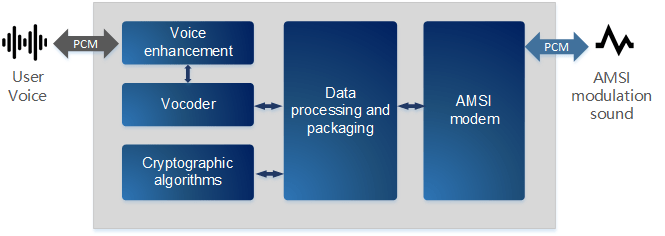Secured Encryption Guaranteed For Communication With Digital Voice Coding Encryption
All of the encryption strategies we have now will one day become old, since PCs get quicker and all the more impressive constantly. Yet again be that as it may, this code is not difficult to break. Yet again over the long haul, assuming that you had sufficient example space (encoded text) a PC examination would track down an example, and, where there's an example, there's a key!
However, we can in any case see that it would take considerably more work to track down the example, because of the different bogus leads that you would take assuming you happened upon the encoded text interestingly without knowing the key for digital encrypted voice.

So, cryptography develops
Our over two code techniques are instances of "stream figures". Stream figures encode each image in turn. Another technique is "block figures", which take the images in squares of a set number of characters and encode them at the same time.
Different techniques incorporate deterministic hash capacities (in which the encoded text delivers a consolidated remarkable 'key'), uneven key cryptography (in which two different keys are utilized, one to scramble and one to unscramble), and the one-time cushion (in which the plain, decoded text is joined with a colossal measure of irregular text, and it is the "key" to unscrambling it to dispose of the arbitrary text).
There are numerous different techniques that are utilized, yet you are basically getting the general purpose with cryptography: ALL codes for digital voice coding encryption can ultimately be broken, however assuming you have a code calculation that is sufficiently refined, it will be essentially rugged in light of the fact that it would consume a huge chunk of time to tackle it with our current innovation.
